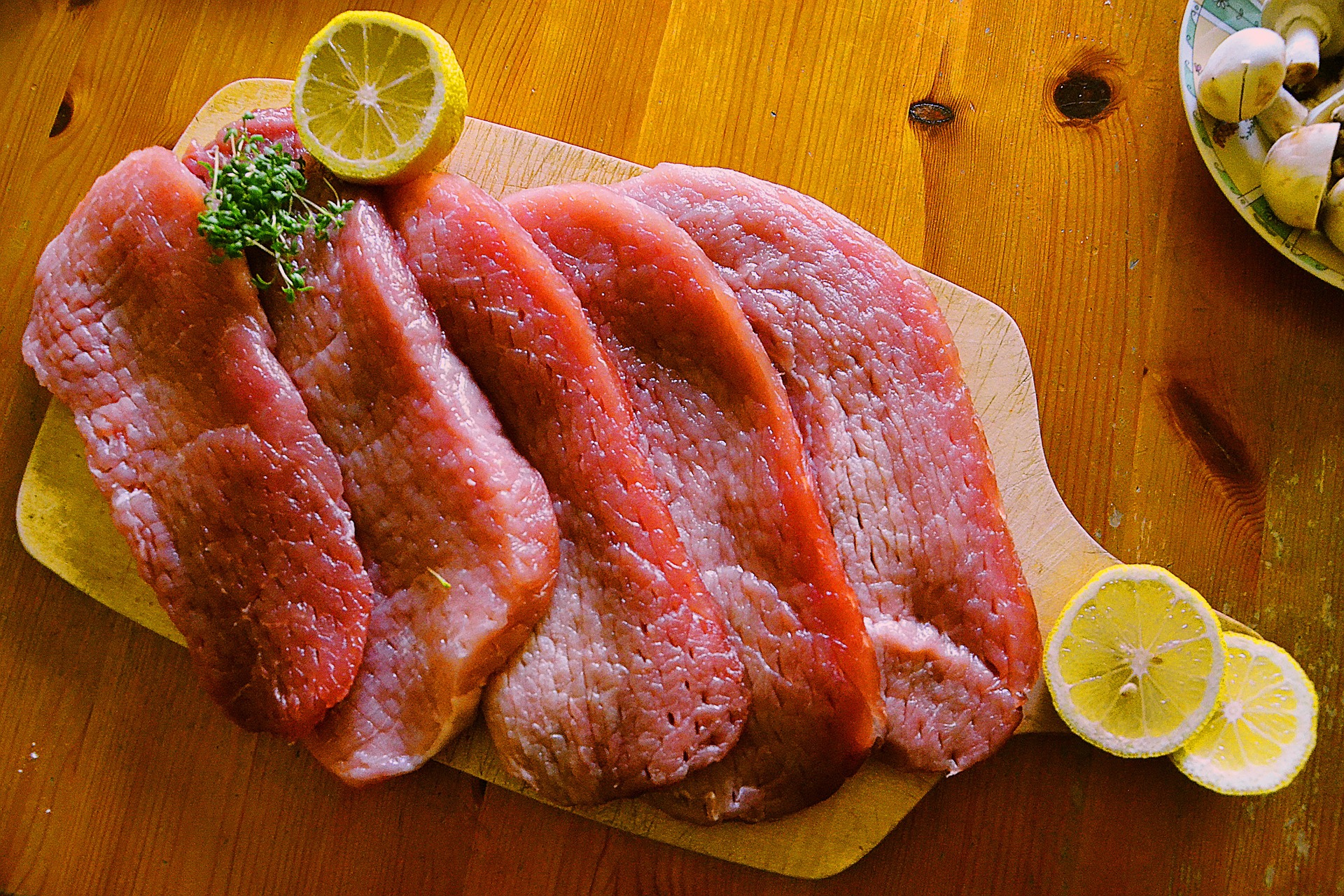The “USDA Livestock and Poultry: World Markets and Trade” report indicates that there could be a higher demand for pork and poultry in 2020 due to the extensive outbreak of African Swine Fever (ASF).
The following is the USDA forecast for meat demand in Asia.

Due to the extensive outbreak of ASF, higher prices for pork have spurred lower consumption, and consumers looking for alternatives such as beef and poultry. Per capita consumption of the three meats is expected to decline by 12% in China alone. Other Asian countries have an expected demand decline of 1-3% due to higher prices and replacing high-priced pork.
Below is the USDA forecast for Consumption, Production and Total Imports of the three meats across the top producing Asian countries.

PORK
Global production is forecast down 10 percent in 2020 due to the impact of African Swine Fever (ASF) on swine herds in several major producing countries. Most of the reduction in global production is due to a 25-percent decline in China pork production. Production is also lower in the Philippines (-16 percent) and Vietnam (-6 percent). South Korea has reported 14 cases of ASF thus far, but outbreaks have been contained and no production impact is expected at present. In Europe, weak domestic demand, ongoing ASF in some Member States, and environmental regulations are limiting expansion, but production is forecast 1 percent higher on strengthening exports. Most major pork exporters will boost production in 2020 due to rising global import demand. Production is up robustly in the United States (4 percent) and Brazil (5 percent).
Global exports are forecast 10 percent higher to 10.4 million tons. China imports are forecast 35 percent higher and account for 35 percent of global pork imports. The Philippines imports are also forecast 32 percent higher due to disease impact on domestic supplies. Outside of ASF affected countries, demand is expected to be muted by higher global prices. Many price sensitive markets are expected to reduce imports of pork on strong competition from ASF affected buyers. EU exports are up 13 percent and Brazil up 20 percent mostly on growth in exports to Asia. In contrast, Canada’s exports are down slightly as restrictions from China limit opportunities for growth.
U.S. production and exports: Production is forecast 4 percent higher in 2020 on increased slaughter and heavier carcass weights. Exports are up 11 percent due to robust demand from China, improved sales to Mexico, and steady demand from Japan and Korea. Although retaliatory tariffs remain in place on U.S. pork in China, tariff exemptions and high Chinese pork prices are expected to boost sales in the second half of 2019 and 2020. Shipments are expected to accelerate to Mexico due to the repeal of retaliatory tariffs in May 2019.
ASF Devastates China’s Hog Industry, Recovery Unlikely in 2020
Lindsay Kuberka, Agricultural Economist
One year after emerging in China, African Swine Fever (ASF) is driving Chinese pork prices to record highs and causing an extensive reduction in pork supply. By the end of 2020, China’s total swine herd is forecast to decline to 275 million head, down nearly 40 percent since the beginning of 2018, before the crisis began. Many producers have exited the industry and others are reluctant to restock due to ongoing disease risk. Pork production is forecast 25 percent lower in 2020 due to a sharply lower swine herd. Lower domestic supplies will boost demand for foreign pork, resulting in record imports. However, consumers will feel the pinch of lower pork supplies, with a 32-percent decline in per capita pork consumption over two years.
Source: USDA-FAS-PSD
Prices on the Rise as Hog Stocks Fall
ASF has likely had a greater impact in China than in any country or previous outbreak and the disease is now considered endemic. The swine herd has plummeted, registering 39 percent lower in August than one year earlier according to data released by the Ministry of Agriculture and Rural Affairs (MARA). Lower hog supplies will have a major impact on pork supplies through at least 2020.
China’s sow herd has fallen to a similar degree; a key question moving forward is how quickly producers can begin restocking. Since ASF emerged, producers have liquidated their breeding herds, and many have exited the industry. During the first half of 2019, market hog prices hovered around the 5-year average, profits were weak and risk of infection high. Prices began to accelerate in June, rising from an average of 15 RMB to over 20 RMB in August as hog supplies withered. Prices peaked during the first week of October at nearly 28 RMB, generating record average profits of over 1,500 RMB/head.
BEEF and VEAL
Global production is forecast to grow 1 percent in 2020 to 61.9 million tons, as gains in Brazil, the United States, and Argentina more than offset declines in China, Australia, and the European Union. Brazil rising production will be supported largely by exports, primarily to China, as well as growing domestic demand on an improved economic outlook. Record Argentina production is spurred by an increasing herd. Exports will be robust as domestic consumption remains stagnant. Australia continues to be negatively impacted by drought in key production areas, resulting in a 10 percent decline in production. Likewise, dry weather conditions in the European Union for more than a year have negatively impacted fodder supply, leading to a decline in the cattle herd.
Global exports in 2020 are forecast nearly 4 percent higher to a record 11.5 million tons on rising shipments from Brazil, India, the United States, and Argentina despite lower Australia and unchanged EU and Uruguay exports. Propelled by robust China demand, Brazil will capture the bulk of global trade expansion with exports at a record 2.6 million tons. Argentina and Paraguay are both also well-positioned to benefit from record China imports. Strong Asia demand partnered with constrained Oceania exportable supplies will generate new or expanded opportunities in Asia for other exporters such as the United States, India, and Mexico.
U.S. production and exports: Production is forecast up nearly 3 percent in 2020 to a record 12.6 million tons on higher slaughter and heavier weights. Exports are forecast up 6 percent to a record 1.5 million tons, accounting for 12 percent of U.S. production. The United States is poised to expand market share in top markets Japan, South Korea, and Taiwan as key competitor Australia struggles to maintain its market shares given its reduced exportable supplies and its dominance in filling China demand. U.S. imports will fall 5 percent to 1.3 million tons on tight Oceana supplies.


CHICKEN MEAT
Global production is forecast 4 percent higher in 2020 to a record 103.5 million tons, surpassing pork production. China will account for more than half of the global production increase, driven by improved access to imported genetics and rising meat prices as African Swine Fever (ASF) outbreaks slash domestic pork supplies. Elevated Chinese protein import demand will boost production in Brazil and Thailand, which will set record production levels in 2020. Brazil’s expansion will also be driven by rising domestic consumption on an improved economic outlook. Rising Mexico demand due to growing incomes will spur production whereas EU and Russia production will only see minimal changes due to market saturation.
Global exports are forecast 4 percent higher in 2020 to a record 12.5 million tons. Expansion is largely due to increased China demand which will propel Chinese imports up by 20 percent in 2020. Brazil and Thailand will make the greatest export gains in China as highly pathogenic avian influenza (HPAI)-related restrictions keep other major suppliers such as the United States out of that market. The Philippines imports are forecast up 27 percent as consumers transition from pork to increasingly price-competitive chicken.
U.S. production and exports: U.S. production is expected to rise 2 percent to 20.2 million tons in 2020 matching demand growth of 2 percent. Exports are forecast 2 percent higher to 3.3 million tons nearing levels prior to the outbreak of HPAI in 2014. U.S. export growth will center on markets such as Mexico and the Philippines.


The U.S. may have an opportunity to fill the demand, especially in China, with the signing of Phase I of a trade agreement. The past year, with tariffs imposed, has likely allowed our competitors to fill the gaps. For 2020, will U.S. be able to export additional quantities of meat to bolster our prices?





